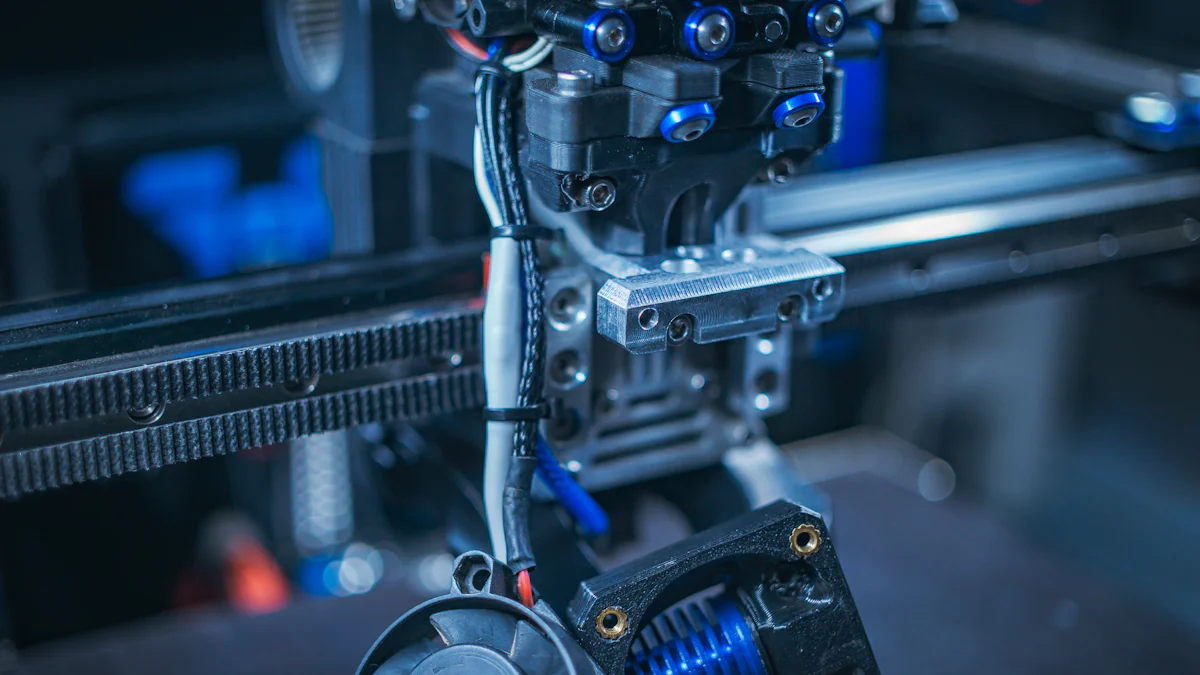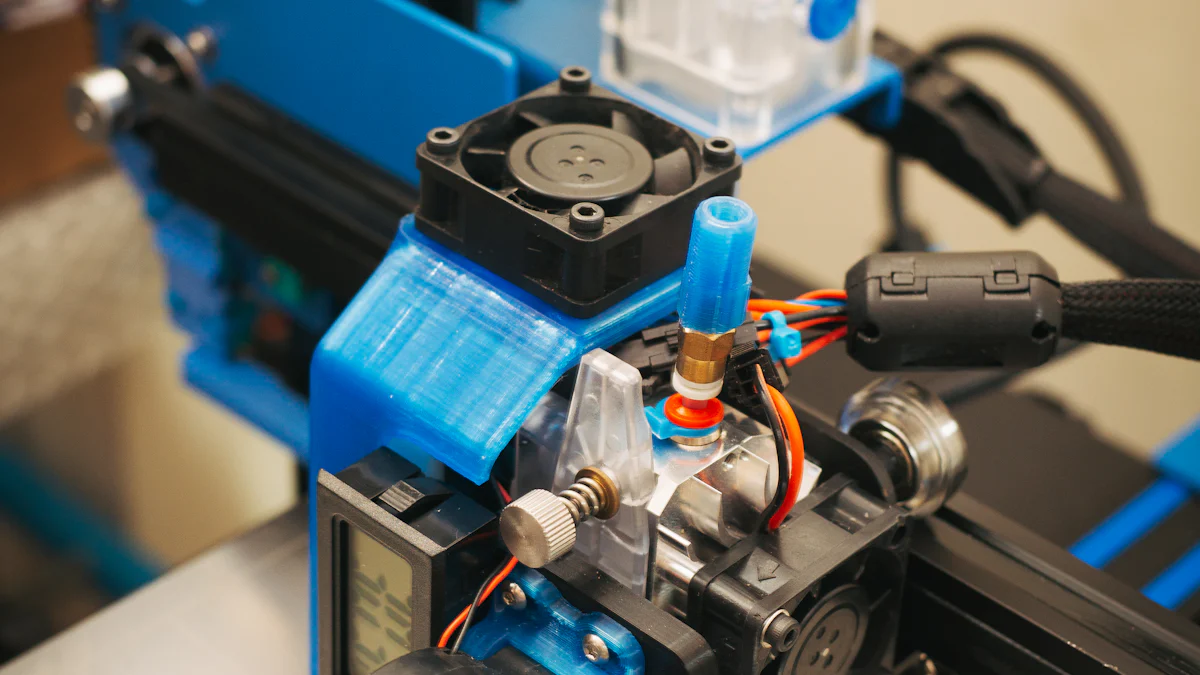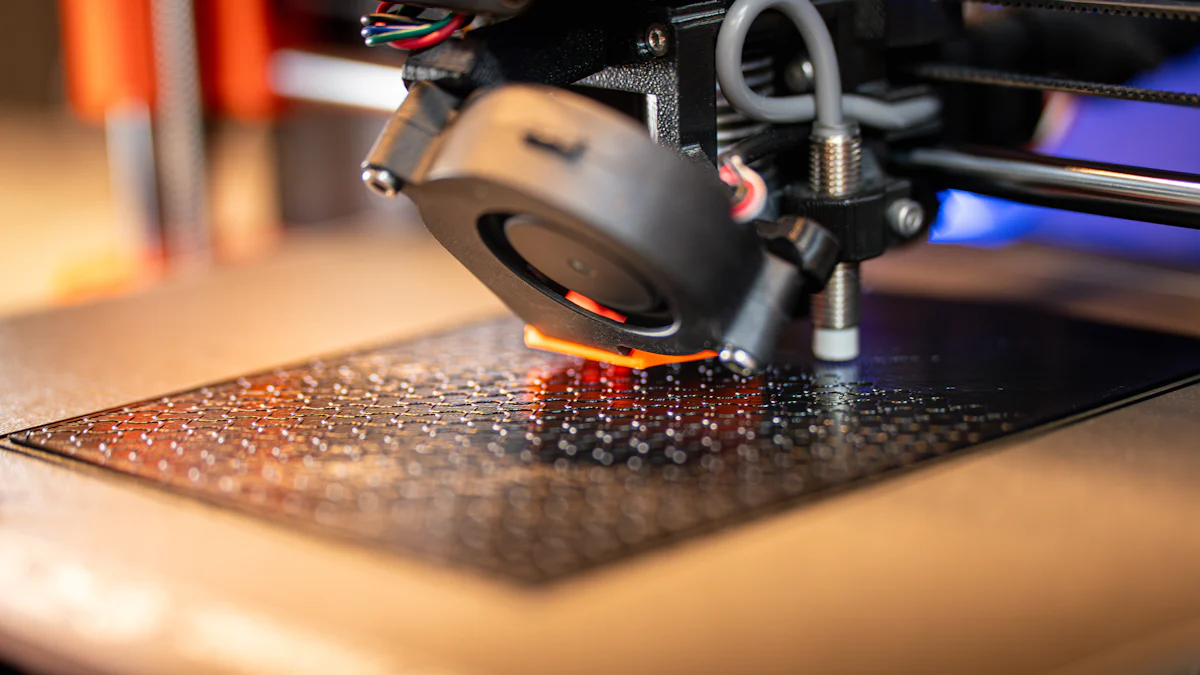
When deciding between Metal Injection Molding and 3D Printing, understanding their unique strengths is crucial. Metal Injection Molding (MIM) excels in producing small, high-precision metal parts with minimal waste, making it a green technology. It is ideal for large-scale production across industries like aerospace and automotive. On the other hand, 3D Printing offers flexibility in design and is perfect for rapid prototyping and custom parts. The choice between Metal Injection Molding vs 3D Printing depends on your specific needs, such as production volume and design complexity.
Key Takeaways
- Metal Injection Molding (MIM) is ideal for high-volume production of small, complex metal parts, making it a go-to choice for industries like automotive and aerospace.
- 3D Printing offers unmatched design flexibility, allowing for rapid prototyping and custom parts without the need for molds, which significantly reduces lead times.
- MIM provides superior mechanical properties and cost efficiency for large-scale production, while 3D Printing excels in low-volume or unique production scenarios.
- Understanding the specific needs of your project, such as production volume and design complexity, is crucial in choosing between MIM and 3D Printing.
- Both methods have their unique advantages: MIM minimizes material waste and enhances durability, while 3D Printing supports a wide range of materials and quick design iterations.
- Consider the initial investment and production costs; MIM requires higher upfront costs due to tooling, but is more cost-effective for mass production compared to 3D Printing.
Understanding the Processes

To make an informed decision between Metal Injection Molding and 3D Printing, it’s essential to understand how each process works. Both methods offer unique advantages and cater to different production needs.
Metal Injection Molding Process
Overview of the MIM process
Metal Injection Molding (MIM) combines the flexibility of plastic injection molding with the strength of metal materials. This process allows for the creation of small, complex metal parts with high precision. MIM is particularly beneficial for industries requiring large volumes of intricate components, such as automotive and medical sectors. By using powdered raw materials mixed with thermoplastic binders, MIM can produce solid metal structures with remarkable accuracy.
Key steps involved
-
Feedstock Preparation: The process begins by mixing fine metal powders with a thermoplastic binder to create a feedstock. This mixture is then granulated into pellets.
-
Injection Molding: The feedstock pellets are heated and injected into a mold cavity, forming the desired shape. This step mirrors traditional plastic injection molding but uses metal instead.
-
Debinding: After molding, the binder is removed through a debinding process, leaving behind a fragile “green part.”
-
Sintering: The green part undergoes sintering, where it is heated to a temperature below the melting point of the metal. This step fuses the metal particles, resulting in a dense and strong final product.
3D Printing Process
Overview of 3D printing techniques
3D Printing, also known as additive manufacturing, builds objects layer by layer from digital models. This technology offers unparalleled design flexibility, making it ideal for rapid prototyping and custom parts. Unlike traditional methods, 3D Printing does not require molds, which significantly reduces lead times.
Key steps involved
-
Design and Modeling: The process starts with creating a digital model using computer-aided design (CAD) software. This model serves as the blueprint for the 3D printer.
-
Material Selection: Depending on the application, various materials can be used, including metals, plastics, and composites. The choice of material affects the properties of the final product.
-
Printing: The 3D printer reads the digital model and deposits material layer by layer to build the object. This step can vary depending on the specific 3D printing technique used, such as Fused Deposition Modeling (FDM) or Selective Laser Sintering (SLS).
-
Post-Processing: Once printing is complete, the object may require additional finishing processes, such as sanding or coating, to achieve the desired surface quality and strength.
Understanding these processes helps in evaluating the suitability of Metal Injection Molding vs 3D Printing for specific applications. Each method has its strengths, and the choice depends on factors like production volume, design complexity, and material requirements.
Advantages and Disadvantages
Metal Injection Molding
Advantages of MIM
Metal Injection Molding (MIM) offers several compelling advantages. First, it excels in producing high volumes of small, complex components with remarkable precision. This makes it a preferred choice for industries like automotive and aerospace, where consistency and accuracy are paramount. MIM also provides cost efficiency in large-scale production. The process minimizes material waste, which contributes to its economic appeal. Additionally, MIM parts often exhibit superior mechanical properties, such as strength and durability, compared to those produced by other methods.
Disadvantages of MIM
Despite its strengths, MIM has some limitations. The requirement for molds can restrict design flexibility. Creating molds is a time-consuming and costly process, making MIM less suitable for projects that demand frequent design changes or updates. Furthermore, the initial investment in tooling can be substantial, which may not be justifiable for low-volume production runs. These factors can limit the adaptability of MIM in rapidly evolving industries or for custom, one-off parts.
3D Printing
Advantages of 3D Printing
3D Printing, or additive manufacturing, brings a different set of advantages to the table. It offers unparalleled design flexibility, allowing for the creation of intricate and complex geometries that might be impossible with traditional methods. This makes it ideal for rapid prototyping and custom parts. 3D Printing eliminates the need for molds, significantly reducing lead times and enabling quick design iterations. This technology also supports a wide range of materials, providing versatility in application across various industries.
Disadvantages of 3D Printing
However, 3D Printing is not without its drawbacks. The process can be slower than traditional manufacturing methods, especially for large-scale production. While advancements in metal 3D printing have improved the strength of printed parts, they may still not match the mechanical properties of those produced by MIM. Additionally, the cost per unit can be higher for large quantities, making it less cost-effective for mass production. The surface finish of 3D printed parts may also require additional post-processing to meet specific quality standards.
Key Differences

When evaluating Metal Injection Molding vs 3D Printing, understanding their key differences is essential. Each method offers unique benefits and challenges, which can significantly impact your decision based on specific project needs.
Cost Comparison
Initial investment and production costs
In terms of initial investment, Metal Injection Molding (MIM) requires a substantial upfront cost due to the need for creating molds. This cost can be a barrier for projects with limited budgets or those requiring frequent design changes. However, once the molds are made, the production costs per unit decrease significantly, making MIM cost-effective for large-scale production.
On the other hand, 3D Printing does not require molds, which eliminates the initial tooling costs. This makes it an attractive option for projects with smaller budgets or those that demand rapid design iterations. However, the cost per unit can be higher compared to MIM, especially for large production volumes.
Cost-effectiveness for different production volumes
For high-volume production, MIM proves to be more cost-effective due to its ability to produce large quantities of parts at a lower cost per unit. This efficiency makes it ideal for industries like automotive and aerospace, where mass production is common.
In contrast, 3D Printing shines in low-volume or custom production scenarios. Its flexibility allows for the creation of unique or complex designs without incurring additional costs for molds or tooling. This makes it suitable for industries that require rapid prototyping or custom parts.
Production Volume
Suitability for large-scale production
MIM excels in large-scale production. Its ability to produce thousands of identical parts with high precision and consistency makes it a preferred choice for industries that demand high-volume manufacturing. The process’s efficiency and cost-effectiveness further enhance its suitability for such applications.
Suitability for small-scale or custom production
3D Printing, with its design flexibility and lack of tooling requirements, is well-suited for small-scale or custom production. It allows for quick design changes and the creation of intricate geometries, making it ideal for projects that require unique or one-off parts. This adaptability is particularly beneficial in industries like medical and consumer goods, where customization is often necessary.
Material Options
Range of materials available for MIM
MIM offers a wide range of material options, including various metals and alloys. This diversity allows for the production of parts with specific mechanical properties, such as strength and durability. Industries that require components with high-performance characteristics often choose MIM for its material versatility.
Range of materials available for 3D Printing
3D Printing also provides a broad spectrum of material choices, from metals and plastics to composites. This variety enables the creation of parts with diverse properties, catering to different industry needs. The ability to experiment with new materials further enhances 3D Printing’s appeal for innovative applications.
Design Complexity
Design limitations and capabilities of MIM
When I consider Metal Injection Molding (MIM), I see a process that excels in producing small, high-precision metal parts. This method shines in industries like aerospace and automotive, where intricate components are essential. However, MIM faces certain design limitations. The need for molds restricts the ability to make quick design changes. Creating or modifying molds can be costly and time-consuming. This constraint limits MIM’s flexibility in adapting to new designs or prototypes.
Despite these limitations, MIM offers significant capabilities. It produces parts with excellent mechanical properties and smooth surface finishes. The process is ideal for high-volume production, making it cost-effective for manufacturing large quantities of intricate components. MIM’s precision and consistency make it a reliable choice for industries demanding high-quality metal parts.
Design flexibility of 3D Printing
In contrast, 3D Printing offers remarkable design flexibility. This technology allows me to create complex geometries and intricate designs without the constraints of traditional molds. I can quickly iterate and modify designs, which is invaluable for rapid prototyping and custom parts. The absence of tooling requirements means I can explore new design possibilities without incurring additional costs.
3D Printing’s flexibility extends to material choices as well. I can experiment with various metals, plastics, and composites to achieve the desired properties for each project. This adaptability makes 3D Printing a preferred option for industries that require unique or one-off parts. While it may not match MIM’s efficiency in high-volume production, 3D Printing’s ability to accommodate complex designs and quick changes offers a distinct advantage in today’s fast-paced manufacturing environment.
Application Suitability
Understanding the suitability of Metal Injection Molding (MIM) and 3D Printing for various applications is crucial. Each method offers distinct advantages that cater to specific industry needs.
Industries and Applications for MIM
Common industries using MIM
I often see Metal Injection Molding used in industries that demand high precision and durability. The automotive sector relies heavily on MIM for producing small, intricate components like gears and fasteners. In the medical field, MIM creates surgical instruments and orthodontic brackets with exceptional mechanical properties. The aerospace industry also benefits from MIM’s ability to produce lightweight yet strong parts, essential for aircraft components.
Typical applications of MIM
MIM excels in applications requiring complex geometries and high-volume production. I find it particularly effective for manufacturing engine components, electronic connectors, and watch cases. The process’s ability to produce dense and solid parts makes it ideal for creating durable metal components. MIM’s versatility extends to producing parts with excellent mechanical properties, comparable to those made through traditional metalworking techniques.
Industries and Applications for 3D Printing
Common industries using 3D Printing
3D Printing has revolutionized many industries with its design flexibility and rapid prototyping capabilities. The healthcare sector uses 3D Printing to create custom prosthetics and implants tailored to individual patients. In the consumer goods industry, 3D Printing enables the production of unique and personalized products, such as custom jewelry and footwear. The architecture field also benefits from 3D Printing’s ability to produce detailed models and prototypes quickly.
Typical applications of 3D Printing
I often utilize 3D Printing for applications that require intricate designs and quick iterations. It is perfect for rapid prototyping, allowing designers to test and refine their ideas efficiently. In education, 3D Printing provides students with hands-on learning experiences by creating tangible models. The technology also supports art and design, enabling artists to explore new creative possibilities with complex geometries.
In comparing Metal Injection Molding vs 3D Printing, I find each method offers distinct advantages tailored to specific needs. Metal Injection Molding excels in producing high volumes of small, intricate metal parts with excellent mechanical properties. This makes it ideal for industries like aerospace and automotive. On the other hand, 3D Printing provides unmatched design flexibility, perfect for rapid prototyping and custom parts. When choosing between these technologies, consider factors like production volume, design complexity, and material requirements. Each method serves unique purposes, ensuring optimal results for your project.
FAQ
What is the primary difference between Metal Injection Molding and 3D Printing?
Metal Injection Molding (MIM) and 3D Printing serve different purposes. MIM excels in producing high volumes of small, intricate metal parts with precision. It is ideal for industries like automotive and aerospace. In contrast, 3D Printing offers flexibility in design, making it perfect for rapid prototyping and custom parts. The choice depends on your specific needs, such as production volume and design complexity.
How do I decide which method is best for my project?
To choose the right method, identify your business objectives and understand where each technology can provide benefits. Consider factors like production volume, design complexity, and material requirements. For high-volume production, MIM is more cost-effective. For custom or low-volume projects, 3D Printing offers greater flexibility.
Can 3D Printing match the strength of MIM parts?
While advancements in metal 3D printing have improved the strength of printed parts, they may still not match the mechanical properties of those produced by MIM. MIM parts often exhibit superior mechanical properties, such as strength and durability, compared to 3D printed parts.
Is 3D Printing more cost-effective than MIM?
3D Printing eliminates the need for molds, reducing initial tooling costs. This makes it attractive for projects with smaller budgets or those requiring rapid design iterations. However, for large production volumes, MIM proves more cost-effective due to its ability to produce parts at a lower cost per unit.
What industries benefit most from MIM?
Industries that demand high precision and durability, such as automotive, medical, and aerospace, benefit significantly from MIM. It produces small, intricate components like gears, surgical instruments, and aircraft parts with exceptional mechanical properties.
How does 3D Printing support rapid prototyping?
3D Printing builds objects layer by layer from digital models, allowing for quick design changes and iterations. This flexibility makes it ideal for rapid prototyping, enabling designers to test and refine their ideas efficiently without the constraints of traditional molds.
Are there limitations to the materials used in MIM and 3D Printing?
Both MIM and 3D Printing offer a wide range of material options. MIM uses various metals and alloys, while 3D Printing supports metals, plastics, and composites. The choice of material affects the properties of the final product, so it’s essential to select the right material for your specific application.
Can I use 3D Printing for large-scale production?
While 3D Printing offers design flexibility, it may not be as efficient as MIM for large-scale production. The process can be slower, and the cost per unit can be higher for mass production. MIM is better suited for high-volume manufacturing due to its efficiency and cost-effectiveness.
How does the design flexibility of 3D Printing compare to MIM?
3D Printing allows for the creation of complex geometries and intricate designs without the constraints of traditional molds. This flexibility enables quick design changes and the exploration of new possibilities. In contrast, MIM requires molds, which can limit design changes and adaptability.
What are the typical applications of 3D Printing?
3D Printing is perfect for applications requiring intricate designs and quick iterations. It is widely used in healthcare for custom prosthetics, in consumer goods for personalized products, and in education for creating tangible models. Its versatility supports a broad range of innovative applications.
